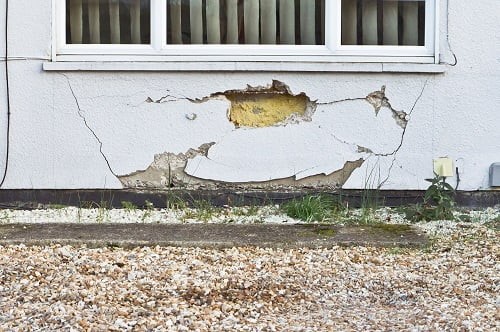Subsidence claims have gone up, but insurers could be bringing those risks down.

Reports this week by the Association of British Insurers show the impact of this year’s heatwave, with subsidence claims reaching their highest levels for 12 years. The ABI says the 357% increase in the value of claims is the highest quarterly jump since records started over 25 years ago – and yet many insurers still aren’t using the tools available to help reduce these risks.
Our insurance expert says, “It’s concerning to see these subsidence claims going up, when insurers could be using more precise tools to reduce their vulnerability to losses through inaccurate rates.”
As the number of claims increases – due to ground losing moisture and shrinking – insurers should be considering innovative and practical solutions to allocating these risks on their books. This can be done with insights showing where known factors might increase the likelihood of subsidence claims, and by helping householders to take preventative action.
The worst hit area this year was south-eastern England, where buildings are well-known for being constructed on subsidence-prone clay soil: subsidence is caused by several factors, but around 75% of the subsidence claims overall are a result of soil shrinkage – a combination of clay substrates drying out due to low rainfall and tree roots branching out in search of moisture. In fact, tree issues are cited as the underlying problem in 7 out of 10 claims.
What’s thought-provoking perhaps, is that today’s leading insurers are more open to ‘lateral thinking’ that will help them to plan for this potential rise in subsidence claims – and to adjust their risk appetite and pricing strategy accordingly.
However, with the highly detailed tree data that’s now available, insurers could be doing far more work to analyse and pre-empt these risks on an individual property basis. This benefits insurers in two ways. Underwriters can make a more informed decision on limit levels, case by case, quickly. More importantly perhaps, they can also work pro-actively during times of prolonged dry weather to help property owners act promptly where vegetation might present a problem.
Property by property, a single tree may be just as much of a culprit as a moisture-seeking copse or a nearby coal-mine. Proximity to buildings, height and breadth of canopies can also play a part in setting levels of risk. Tree data is complex, and analysts still need it to be interpreted at an individual address level. This involves substantial processing capacity – making sure the source information is as up to date as it can be – which means that, while one or two larger insurers have invested in the technology, smaller insurers are struggling to offer the same service.
Simon continues, “Previously, these analytic tools weren’t a practical option for smaller insurers – the amount of data being considered, and the specialist nature of spatial analytics meant the costs were unjustifiable and you needed an in-house team of data specialists to understand and then use the results. But today, these tools are readily available – and they’re cost-effective from day one.”
Customers who choose small to medium insurers may be paying the price for a lack of investment in those analytic tools. As a result, residential underwriting and pricing has been suffering from a disproportionate level of imbalance – the net effect is an increase in premiums.
We recognised this imbalance for insurers as we were developing Subsitree, our residential subsidence risk tool. Subsitree provides a normalised risk score – it makes subsidence risk easy to quantify on an individual property basis – and it’s an ideal tool for anyone who’d like to see that risk in detail or share the information in a way that makes it easy to understand. What’s more, Subsitree is accessible as a downloadable file and as a web-based service via the Emapsite Perils data hub – which means these insights are accessible to insurers, actuaries, underwriters, and analysts right across the industry. Subsitree is more than a tool that can reduce the risk of subsidence claims, it’s a way to change residential property insurance for the better.
Latest News

Decoding the OS National Geographic Database: A Game-Changer for Utilities
The OS National Geographic Database (OS NGD) offers utility companies powerful, up-to-date geographic data to improve asset management, risk planning, and sustainability efforts. While adoption has been slow, partners like Idox Geospatial make access and integration easier than ever.
Read Full Article-
Geospatial Expertise for Smarter, Greener Insurance Investments
Read Full Article -
Emapsite.com is now Idox Geospatial Ltd - what this means for you.
Read Full Article
